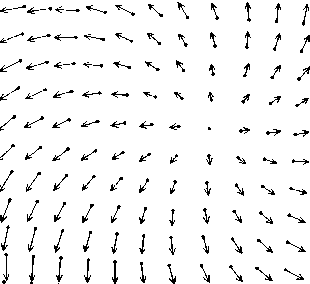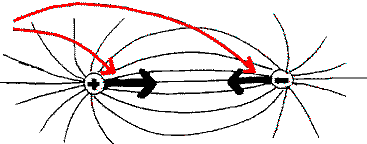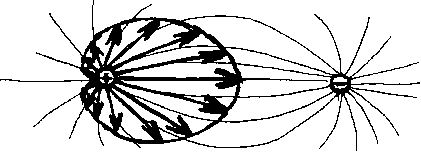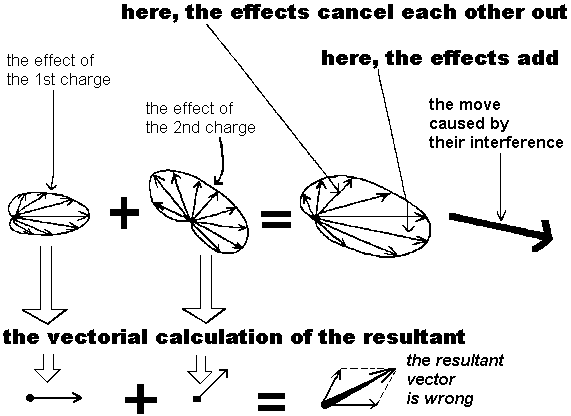home
contents Mathematics
'in theory' the dimension of a contrast can be self-similar
counting in a different way
home |
contents Mathematics |
previous
: 'in theory' the dimension of a contrast can be self-similar |
next
: counting in a different way |
| direct to all other pages of the section ----> | 00 | 01 | 02 | 03 | 10 | 11 | 12 | 20 | 21 | 30 | 31 | 32 | 33 | 34 |
The trap
in the vectorial representation of the forces
Then, by nature, the value of the deformation doesn't move on a straight line toward infinity, but moves round and round the closed curve 0/1. Often, to remind this propriety, we will speak about 'curved' dimensions of deformation, by opposition to coordinates which are 'straight' dimensions for we measure them on straight axes.
We saw how we can describe the evolution of a contrast with 'curved'
dimensions. We will now see how they also can measure travel paths. The
key point is that we have to clearly differentiate the 'curve' followed
by a point, and the 'curved' value that makes it move.
In effect, what we will try to track, is not the path in itself,
which will be only a result of the deformation dimension, but the organization
of the forces which apply on a point and make it move.
| Fundamentally, that dimension will be useful to
describe a force field, for instance an electromagnetic
field.
Usually, such a field is described by a set of vectors, which indicate for example, in every point, the direction and the velocity of a flow. Which fits with coordinate dimensions (opposite: an example of a force field). [picture from an article of G. Hooft : les théories de jauge et les particules élémentaires - Pour la Science] |
 |
| The originality
of our approach, is in not adding in each space point, the whole set of
the promptings which drive it, and in no 'reducing' it in a single vector.
We suggest that we let open, 'not solved', the combination of these promptings.
So, in the general case, infinity of vectors exists in every point. Each indicates in its specific direction, the intensity of the prompting of the phenomenon in a point. |
|
usually,
the attraction between 2 electric charges is summerized with 2 vectors |
 |
In our system of representation we will not 'summarize' the effect
of the electric field, but on the contrary we will let it spread in all
the directions of space. Every field line, corresponds to an effect, a
prompting toward the other charge. And we represent, for every line, the
direction of that prompting (tangential to the curve) and its intensity
(the more it is pointed toward the other, the bigger the intensity).
We point out, that if the 2 charges are weak, or if both are strong,
the drawing will look the same, and will infer one from the other by homothetie.
In short, they will be self-similar.
| our
proposal
to represent the same electric attraction |
 |
This representation, looks a bit like a heart filled with vectors, whose
intensity varies between a minimum and a maximum. That's the first 'curved
aspect' of the value for it go round a circle from 0/1 to 1/0.
And the resultant of all these vectors, if you calculate it, would
be a unique vector which would describe the direction and the velocity
of the curve that the charge follows. That's the second 'curved aspect'
of that dimension.
It may appear, at first, that we are complicating things by no reducing
the set of the promptings in a point with a single vector.
But if we take a point which
is not only prompted by a unique charge, but which is prompted by 2 charges
or more, we will then have the following case: every
charge causes a curve dimension of deformation and they all gather at the
same point. A concordance or opposition of their respective shape can occur
between the 2 dimensions. This concordance or opposition, will show how
the effects of the dimensions add in some directions, or cancel each other
out in other directions. A single vector for each charge would have
completely erased these data that may be basic to understand the phenomenon
and its evolution.

home |
Math |
top |
next
: |
author |